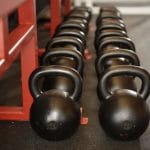Exercise prescription has changed over the 30 plus years since I first studied it in grad school. This latest article, from research presented at the ACSM annual meeting, highlights a return to sanity: http://well.blogs.nytimes.com/2012/06/06/moderation-as-the-sweet-spot-fo…That’s not to say you can’t or shouldn’t do more. In fact, with the emphasis on hi intensity training, about which I’ve written or posted on STEPS FACEBOOK page and here, one might think that it’s balls to the walls for any benefits from exercise, but I think it needs to be clarified and so I shall.
Exercise is an arithmetic summation of four variables: time (duration), frequency (per week or per month), intensity (speed or load or grade or tension), and type (cardio or resistance or combo). Thus, you could run 20 minutes x 2 miles x 3 per wk x 80% of max capacity and you’d have 20 x 2 x 3 x 80 = 9600 units of running. Simple? No, not really but it gives you an idea of how you might gage your activity levels. So, if next week you ran at 70% but added one mile per run, you would now be at 33 x 3 x 3 x 70 = 21000, and that would be a harder week than the week before. Now, if you decided you wanted to bike those three days, even at the same relative intensity, adjusting for distance where time is the sam
So how can you do it? Well, this is where the art of training comes in compared to the science of it, and this article addresses this issue nicely.
You see, my moderate is not the same as yours esp if yours is done differently, but the one constant is subjectivity. If an honest assesment is made, my moderate EQUALS your moderate. Now we just have to equilibrate time and frequency. So if you do 30 minutes 3 times a week at a moderate pace, say, on the elliptical, and I do the same but on a cross country ski machine, we’re doing about equal work. If you cover more distance one week during those same 30 minutes, you have gone beyond moderate (although there is a broad range of moderate; at some point, you exceed it, tho), and now you have gone over the general exercise prescription for health and longevity. Is this deadly? Hell no, but if you continue pushing that envelope, then at some point you will no longer be doing yourself any favors. Unless you are competing toward some measurable goal – speed, 
Now turn off the computer and take a walk.














